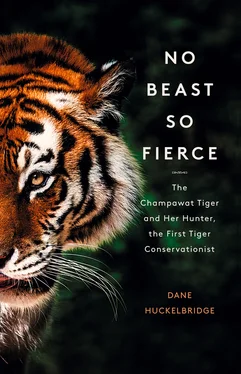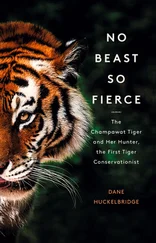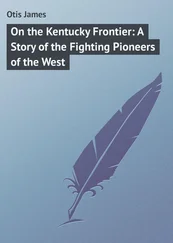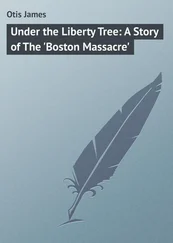
COPYRIGHT
William Collins
An imprint of HarperCollins Publishers 1 London Bridge Street London SE1 9GF WilliamCollinsBooks.com
This eBook first published in Great Britain by William Collins in 2019
First published in the United States by William Morrow, an imprint of HarperCollins Publishers in 2019 as No Beast So Fierce: The Terrifying True Story of the Champawat Tiger, the Deadliest Animal in History
Copyright © Dane Huckelbridge 2019
Dane Huckelbridge asserts the moral right to be identified as the author of this work.
Cover image © Getty Images
A catalogue record for this book is available from the British Library.
All rights reserved under International and Pan-American Copyright Conventions. By payment of the required fees, you have been granted the non-exclusive, non-transferable right to access and read the text of this e-book on-screen. No part of this text may be reproduced, transmitted, downloaded, decompiled, reverse engineered, or stored in or introduced into any information storage and retrieval system, in any form or by any means, whether electronic or mechanical, now known or hereinafter invented, without the express written permission of HarperCollins.
Source ISBN: 9780008331726
Ebook Edition © February 2019 ISBN: 9780008331740
Version: 2019-01-29
Praise for No Beast So Fierce
“A great tale and study of man versus beast, or rather, beast versus man. The seminal battle between Jim Corbett and the Champawat Tiger stands as an epic encounter of the ages. Dane Huckelbridge’s No Beast So Fierce will make you rethink your position in God’s universe—and on the food chain.”
JIM DEFELICE, #1 bestselling co-author of American Sniper
“I had a feeling this book would hook me from the get-go. I was right. No Beast So Fierce is much more than a cautionary tale of the Man-Eater of Champawat, a Royal Bengal tiger responsible for hundreds of deaths in Nepal and India, or, of Edward James Corbett, the legendary hunter who shot and killed the big cat in 1907. Dane Huckelbridge’s remarkable narrative also reveals the circumstances that cause tigers to stalk human prey as well as Corbett’s transformation into a conservationist and ardent champion for protecting the animals he once hunted.”
MICHAEL WALLIS, author of The Best Land Under Heaven
“A gripping page-turner that also conveys broader lessons about humanity’s relationship with nature.” Publisher’s Weekly
Praise for Bourbon by Dane Huckelbridge
| “Complex and entertaining” |
Wall Street Journal |
| “Engrossing” |
Washington Post |
| “Definitive” |
Sacramento Bee |
No beast so fierce but knows some touch of pity. But I know none, and therefore am no beast.
— William Shakespeare, Richard III
Do not blame God for having created the tiger, but thank Him for not having given it wings.
— Indian proverb
COVER
TITLE PAGE
COPYRIGHT
PRAISE FOR NO BEAST SO FIERCE
EPIGRAPH
MAP
PROLOGUE
INTRODUCTION: UNLIKELY HUNTERS
PART I: NEPAL
1THE FULL MEASURE OF A TIGER
2THE MAKING OF A MAN-EATER
3A MONARCH IN EXILE
PART II: INDIA
4THE FINEST OF HER FAUNA
5THE HUNT BEGINS
6DARKNESS FALLS
7TOGETHER, IN THE OLD WAY
8ON HOSTILE GROUND
9AN AMBUSH IN THE MAKING
10A LITERAL VALLEY OF DEATH
11CONFRONTING THE BEAST
12A MOMENT OF SILENCE
13AN UNLIKELY SAVIOR
EPILOGUE
PLATE SECTION
BIBLIOGRAPHY
INDEX
ACKNOWLEDGEMENTS
ALSO BY DANE HUCKELBRIDGE
ABOUT THE PUBLISHER
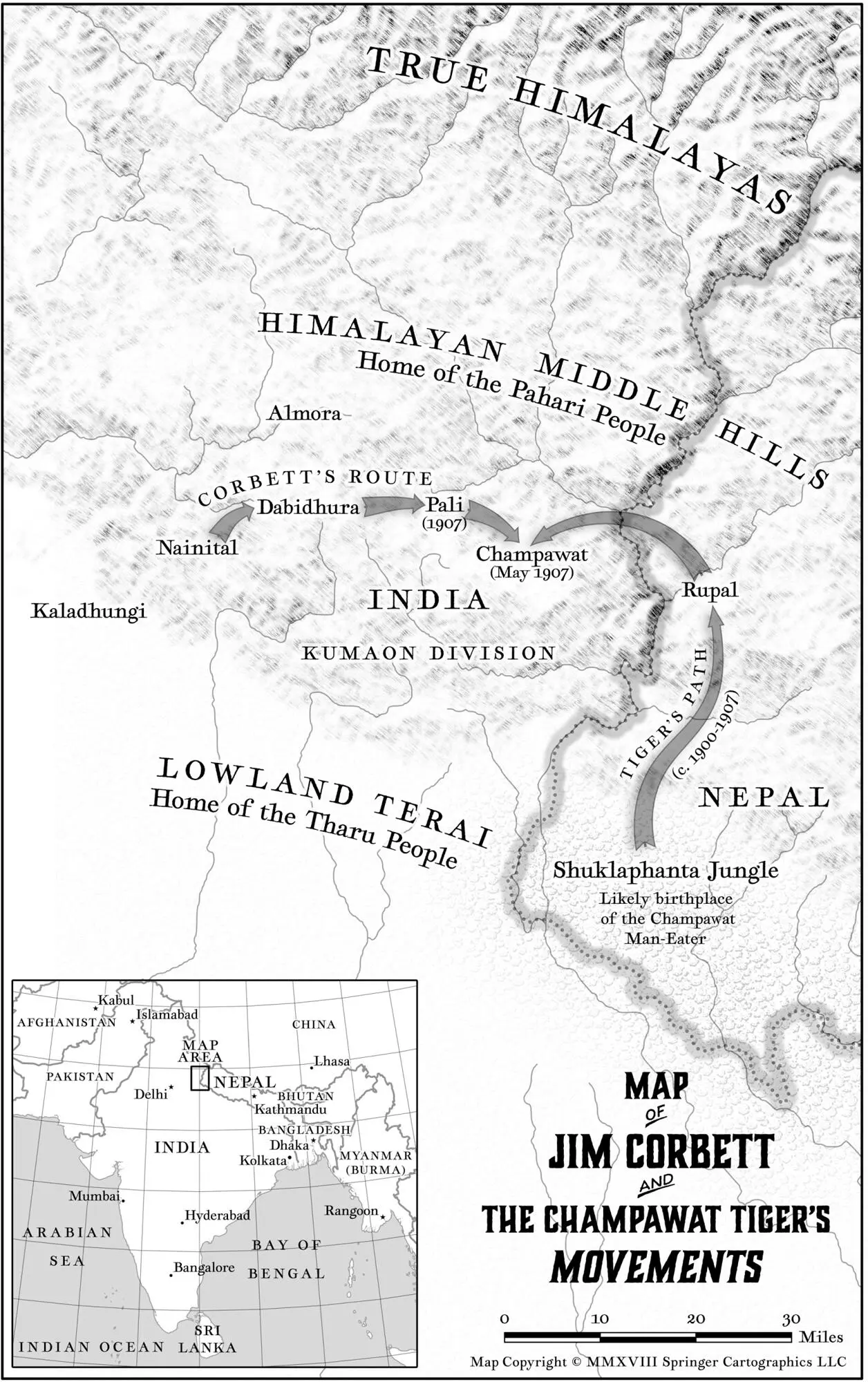
PROLOGUE
We do not know the year. Nor does history record the poacher’s name. But around the turn of the twentieth century, somewhere in the terai near the Kanchanpur District of western Nepal, a man made a terrible mistake.
He attempted to kill a Bengal tiger.
We can imagine him to be a young man—that seems all but certain. For the local Tharu people are well acquainted with tigers, and only a youthful and inexperienced hunter would be so careless. After all, a tiger hunt among the Tharu is a solemn affair, to be initiated with a puja sacrifice of roosters and goats, as a show of respect to the forest deity Ban Dhevi. It is an act of profound spiritual and earthly significance, one that risks angering gods and kings alike. If such a decision is to be even considered, it must be blessed by a gurau with a sacred glass of rakshi, and sanctified by the wearing of holy red ribbons.
But change is coming, even to this remote province. Like others of his generation, this brash young man likely may have tasted the British gin and cigarettes that come smuggled across the border from India, and seen the Western suits and cravats one can purchase beyond the Sharda River, and he has no time for rice liquor or garlands made of ribbons. He does not see the tiger as a divine spirit, a lord of the forest, a custodian of the natural world, maintaining the balance of all things. To him, a tiger is a sack of gold and nothing more: money for clearing land, funds to buy a water buffalo and start a farm of his own. The young man bristles at the thought of eking out a living from the forest like his parents, of dwelling in a mud-walled house thatched with elephant grass. No, that is simply not for him.
So, we may imagine, he sets out from his village, a decrepit old muzzle-loader slung over his shoulder, an oblivious goat hobbling along in tow. He follows a path of packed earth, skirting the edge of the mustard and lentil fields, tracing the dry bed of a meandering nullah, until he at last reaches the sal trees where the true jungle begins. He has built a small machan—a tiger-hunting stand—near a clearing where he has seen fresh tiger tracks in the mud, and after tying the goat to a peg in the earth, he mounts his machan and does his best to get comfortable.
The heat of the afternoon mounts, and the goat flicks its ears lazily, and the odd croak of a mating florican is the only sound to be heard. The young man wipes the sweat from his brow and scratches a mosquito bite, his initial excitement turning slowly to boredom, and then at last to irritation.
The shadows lengthen, dusk approaches, and still the scrawny goat stands tethered and unmolested. The young man begins to doubt that the tiger will come at all. Perhaps the old men in the village were right, perhaps it was foolish to even consider coming into the forest without—
And then it happens. It arrives with a grace and a force unlike any the young man has ever seen. An attack appalling in its power and mesmerizing in its beauty, as if the dappled patterns of the forest floor themselves have come alive and engulfed the poor creature. A liquid blur of tawny stripes, then a mound of working muscle. The goat has time to neither move nor bleat—one moment it is alive, and the next, it is not. Its neck is snapped in an increment of time too small to measure.
Читать дальше
